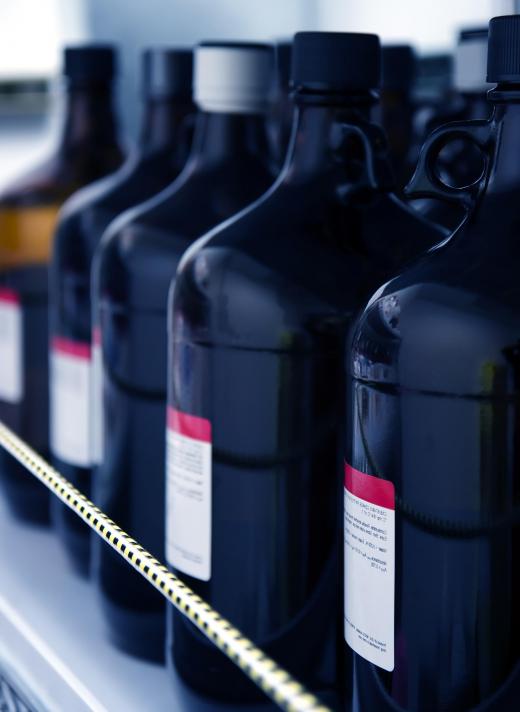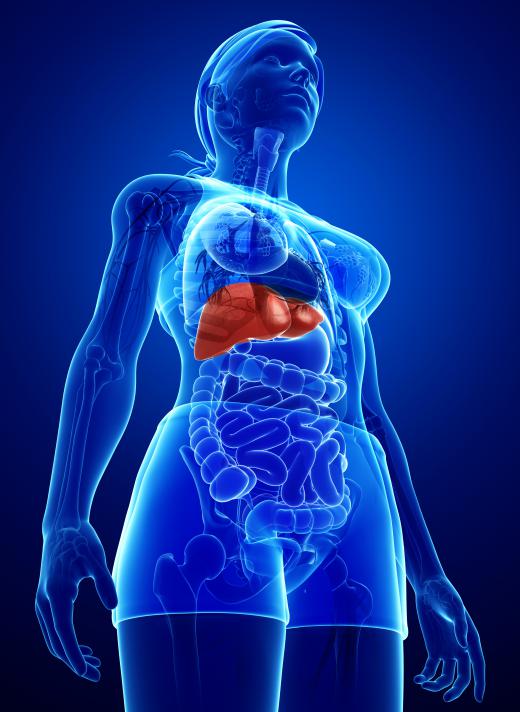What Is Carbon Tetrachloride?
Carbon tetrachloride is a colorless organic compound with the chemical formula CCl4. The International Union of Pure and Applied Chemistry (IUPAC) name for this chemical is tetrachloromethane. Carbon tetrachloride is often used as an organic solvent, a fuel additive, a catalyst, a refrigerant or a metal de-greaser. Prolonged exposure to this chemical can be harmful to the liver, kidneys and central nervous system.
At room temperature, carbon tetrachloride is a colorless liquid. Its molecular weight is 153.8 grams per mol. The melting point of this compound is minus-9.4 degrees Fahrenheit (minus-23 degrees Celsius), and the boiling point is 170 degrees Fahrenheit (76.7 degrees Celsius). Carbon tetrachloride is soluble in organic solvents such as acetone, ethanol, benzene and carbon disulfide. It shows a slight degree of solubility in water.

Structurally, this compound has a carbon atom at its center, surrounded by four atoms of chlorine. This arrangement gives the compound a tetrahedral shape. There are many other names by which this chemical might be known, including carbon chloride, carbon tet, freon 10, halon-104 or tetrachlorocarbon.
The most common method of making carbon tetrachloride is to react chlorine with methane. Hydrochloric acid, HCl, is formed as a byproduct of the reaction. This is the most common method for producing CCl4, but it also can be made by chlorinating compounds such as chloroform or dichloromethane.

Historically, carbon tetrachloride has been used in various applications, ranging from dry cleaning fluid to fire extinguishers. It often was used to manufacture refrigerants, but this practice has declined since the late 1980s, when many countries began adopting certain regulations to protect the environment. The refrigerants in question were found to be detrimental to the ozone layer. Usage in other commercial applications also has declined because of the health risks associated with the chemical.

Unlike many of its historical applications, carbon tetrachloride's modern applications tend to distance the user from the chemical itself. These applications generally are limited to the use in chemical processes such as catalysis or use as an organic solvent. The non-polar structure of the chemical makes it an excellent industrial de-greaser for metals.

Toxicity reports for carbon tetrachloride confirm it as a hepatotoxin, meaning that it can cause damage to the liver. Prolonged exposure might also result in damage to the central nervous system and kidneys. Symptoms of high exposure include general gastric problems, anorexia, headache, depressive symptoms and giddiness. Carbon tetrachloride also is a suspected carcinogen and should be handled with care.
AS FEATURED ON:
AS FEATURED ON:














Discussion Comments
@everetra - It appears that the carbon tetrachloride formula is simple enough; just take methane and mix it with chlorine. The problem is that methane is very dangerous and the resulting reaction is just as toxic in my opinion.
Regardless of what you think about carbon tetrachloride I wouldn’t go about making your own stuff just so you can test it out on your engine. Buy your own bottle if you need it or just don’t do use it at all.
I don’t think it takes much exposure to these really harmful agents to cause damage to your health.
I didn’t know that one of the carbon tetrachloride uses is as a fuel additive. I have been told to generally avoid adding fuel additives to my gasoline because they don’t do what they claim.
That is, many additives claim to increase fuel efficiency dramatically or clean the inside of your engine. If you want your engine cleaned you should get it professionally serviced; there are techniques to do this.
At any rate since it’s used in dry cleaning fluid as well I suppose its properties help it to clean the fuel in your tank. I noticed it has chlorine in it; chlorine dioxide has been used as a cleaning agent in pools for years. I guess I can understand how this compound could be used as an additive in fuel.
Post your comments